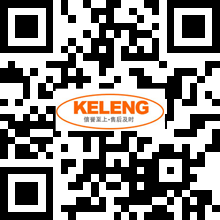- 《冷藏 、冷冻食品物流包装、标志、运输和储存》国家标准于2020年3月1日正式
- 本站编辑:杭州克冷制冷设备有限公司发布日期:2020-03-28 22:41 浏览次数:

《冷藏 、冷冻食品物流包装、标志、运输和储存》(GB/T 24616-2019)国家标准于2020年3月1日正式实施。
1、温度要求
冷藏食品 chilled foods
在8℃以下、冻结点以上条件下储运及销售的食品。
冷冻食品 frozen foods
在≤-18℃条件下储运及销售的食品。
The national standard for packaging, marking, transportation and storage of refrigerated and frozen food logistics (GB/T 24616-2019) was officially implemented on March 1, 2020.
1. Temperature requirements
Chilled food chilled foods
Food stored, transported and sold under conditions below 8℃ and above freezing point.
Frozen foods
Food stored, transported and sold under the condition of ≤-18℃.
2、包装要求
根据冷藏食品、冷冻食品的类型、形状、特性及周围环境的影响合理选择物流包装方案,确保冷藏食品、冷冻食品在物流过程中的质量和卫生安全。
包装上至少应注明冷藏食品、冷冻食品储运的温度条件。
2. Packaging requirements
According to the types, shapes, characteristics and influences of the surrounding environment of refrigerated food and frozen food, the logistics packaging scheme is selected reasonably to ensure the quality and health safety of refrigerated food and frozen food in the logistics process.
At least the temperature conditions for storage and transportation of refrigerated food and frozen food should be indicated on the package.

3、运输要求
(1)运输冷藏食品、冷冻食品应使用具备温控能力的专用设备,专用设备应防冻、隔热保温性能良好。
(2)运输设备厢体内应配置具有异常报警功能的温度自动记录设备,对运输过程中厢体内的温度进行实时监测和记录。
(3)运输设备厢门处宜加装隔温装置。
3. Transportation requirements
(1) the transportation of refrigerated food and frozen food shall use special equipment with temperature control capability, and the special equipment shall have good anti-freezing and thermal insulation performance.
(2) an automatic temperature recording device with abnormal alarm function should be equipped in the transport equipment compartment to monitor and record the temperature in the compartment in real time during the transport process.
(3) the compartment door of transport equipment should be equipped with a temperature isolation device.
4、温度控制要求
(1)运输过程中不应擅自打开运输设备厢门及冷藏食品、冷冻食品的包装。
(2)运输设备厢体内的温度应始终保持在冷藏食品、冷冻食品要求的范围内。
(3)温度自动记录设备的记录间隔应≤5min,超出允许的波动范围应报警。
4. Temperature control requirements
(1) in the process of transportation, the door of transport equipment compartment and the packaging of refrigerated food and frozen food shall not be opened without authorization.
(2) the temperature inside the transport equipment compartment should always be kept within the range required for refrigerated food and frozen food.
(3) the recording interval of the automatic temperature recording equipment shall be no more than 5min, and the alarm shall be given if the allowable fluctuation range is exceeded.
5、卸货要求
(1)卸货区宜配备封闭式月台,并配有与运输车辆对接的密封装置。
(2)冷藏食品、冷冻食品的温度在卸货前应检测及记录,如果检测到的温度不合格,应及时通知管理人员和货主,协商处理措施。
(3)卸货时应轻搬、轻放,不应野蛮作业及任意摔掷,不应直接接触地面。
(4)卸货期间,冷藏食品、冷冻食品中心温度波动幅度不应超过其规定温度的±3℃。
(5)卸货作业因故中断时,运输设备厢门应立即关闭并开启制冷系统。
(6)完成作业后,应及时对运输设备厢体进行清洗、通风、视情况消毒,并在晾干后关闭厢门。
5. Discharge requirements
(1) the unloading area should be equipped with a closed platform and a sealing device for docking with the transport vehicle.
(2) the temperature of refrigerated food and frozen food shall be detected and recorded before unloading. If the detected temperature is unqualified, the management personnel and the owner shall be informed in time, and the disposal measures shall be negotiated.
(3) the unloading should be light, light, should not be brutal operation and arbitrary throw, should not directly touch the ground.
(4) during the unloading period, the temperature fluctuation range of the refrigerated food and frozen food center shall not exceed ±3℃ of the specified temperature.
(5) when the unloading operation is interrupted for any reason, the carriage door of the transport equipment shall be closed immediately and the refrigeration system shall be started.
(6) after the completion of the operation, the carriage body of the transport equipment shall be cleaned, ventilated and disinfected as the case may be, and the carriage door shall be closed after drying.

6、储存要求
(1)冷藏食品、冷冻食品入库后应及时进入库位,并进行存量记录,内容包括但不限于:入库时间、入库温度、储存期间温度变化、库内的温湿度、批号、数量、生产日期、保质期、货位标签和平面货位图,记录应保留至相关冷藏食品、冷冻食品保质期后的半年。
(2)库内温度和相对湿度应满足冷藏食品、冷冻食品的储存要求并保持稳定,温度波动幅度不应超过2℃。在食品进出库时,库内温度波动幅度不应超过±3℃。
(3)储存期间,应定期检测库内的温度和相对湿度。库内温湿度监测装置的记录间隔应≤30min,超出允许的波动范围应报警。
(4)应根据不同冷藏食品、冷冻食品的需要,适当对冷库进行通风换气。
从包装、运输、到储存都有严格的温度控制要求,爷爷奶奶再也不用担心冷藏、冷冻食品的安全健康问题。
6. Storage requirements
(1) after the frozen food, frozen food storage should enter the location in time, and stock record, the content including but not limited to: during the storage time, storage temperature, storage temperature, the temperature and humidity of the rolls, batch number, quantity, production date, shelf-life, pallet label and plane figure, would record should be retained to related frozen food, frozen food shelf-life after half a year.
(2) the temperature and relative humidity in the storage shall meet the storage requirements of refrigerated food and frozen food and be kept stable, and the temperature fluctuation shall not exceed 2℃. When food enters or leaves the storehouse, the fluctuation range of temperature in the storehouse should not exceed ±3℃.
(3) during storage, the temperature and relative humidity in the storage shall be tested periodically. The recording interval of the temperature and humidity monitoring device in the reservoir shall be no more than 30min, and the alarm shall be given if the fluctuation range is beyond the allowed range.
(4) according to the needs of different refrigerated foods and frozen foods, the refrigerated storage shall be properly ventilated and ventilated.
From packaging, transportation, to storage have strict temperature control requirements, grandparents no longer need to worry about the safety and health of frozen food.
- 上一篇:2020冷库制造行业发展趋势展望
- 下一篇:冷库排管设计的注意事项











